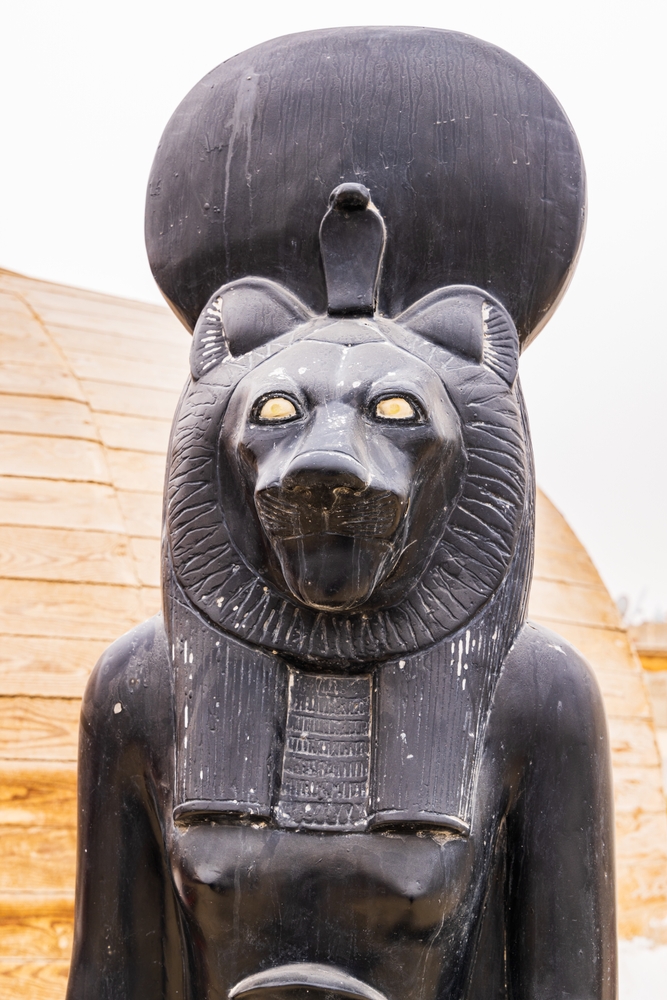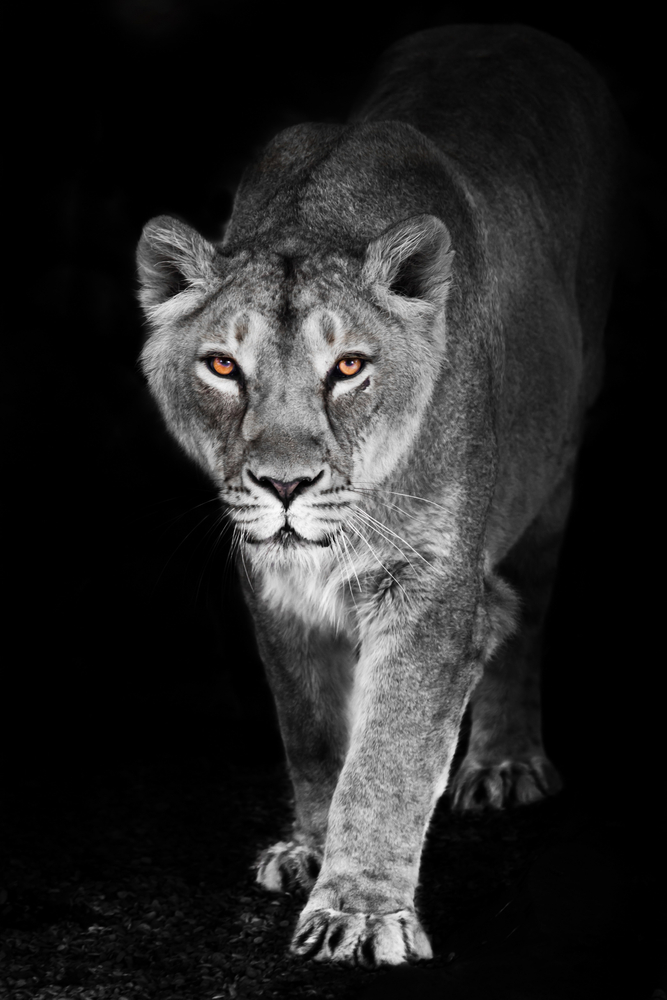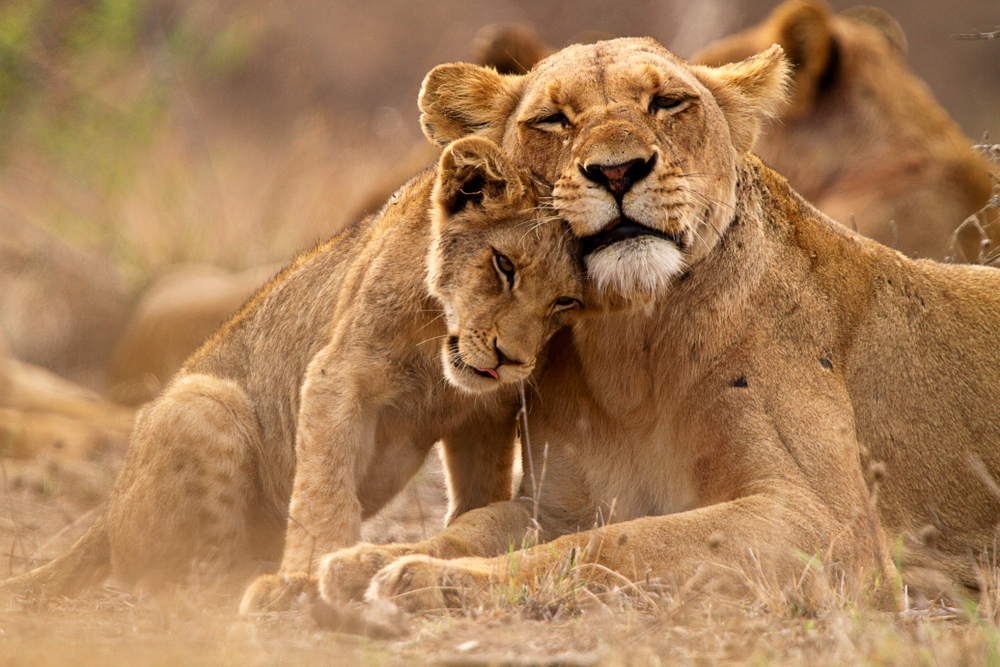Ancient Egyptian mythology is filled with fascinating deities, each with their own stories, symbols, and powers. Among them, Sekhmet stands out as one of the most intriguing. If you're interested in Egyptian mythology, learning about Sekhmet can offer valuable insights into the beliefs and culture of ancient Egypt. This blog post explores the myths, symbols, and powers associated with Sekhmet.
Jump to:
Who is Sekhmet?

Sekhmet, often referred to as the "goddess of war" and "goddess of healing," is a complex figure in Egyptian mythology. She is depicted as a lioness or as a woman with the head of a lioness, symbolising her fierce and protective nature. Sekhmet's name means "the powerful one," and she was believed to be both a bringer of destruction and a healer.
Recommended for you!
Best SellersThe Myths of Sekhmet
Sekhmet's stories are a mix of awe-inspiring power and insightful lessons, showcasing her dual nature as both a bringer of destruction and a healer. Here are some fascinating myths involving Sekhmet:
The Creation Myth
One of the most well-known myths involving Sekhmet is the story of her creation. According to the legend, Ra, the sun god, created Sekhmet from his fiery eye to punish humanity for their disobedience. Sekhmet's rage was so intense that it threatened to annihilate all of humanity. To stop her, Ra tricked Sekhmet by flooding the land with beer dyed red to resemble blood. Mistaking it for blood, Sekhmet drank the beer and became so intoxicated that she fell asleep, allowing humanity to be saved.
Sekhmet and Hathor
Sekhmet is often associated with Hathor, another powerful goddess in Egyptian mythology. While Sekhmet represents the fierce, destructive aspect of the divine feminine, Hathor embodies love, music, and joy. Some myths suggest that Hathor and Sekhmet are two sides of the same goddess, showing the duality of their nature.
The Distant Goddess
There is also a myth where Sekhmet becomes estranged from Egypt and retreats to Nubia. During her absence, chaos ensues, and the land suffers. The god Thoth, representing wisdom, is sent to persuade her to return. After a series of negotiations and offerings, Sekhmet finally agrees to come back, restoring balance and order to the land.
Sekhmet in Astrology and the Zodiac
In Egyptian astrology, Sekhmet is typically associated with the astrological period from July 29 to August 11 and from October 30 to November 7. People born under Sekhmet's influence are believed to embody her qualities of strength, courage, and protection, reflecting the fierce and protective nature of the goddess.
Symbols Associated with Sekhmet

Sekhmet is rich in symbols that represent her power and attributes:
The Lioness
The lioness is Sekhmet's primary symbol, highlighting her fierce and protective nature. As the Egyptian lioness goddess, she embodies the strength and ferocity of the lioness in protecting her cubs and territory.
The Solar Disk and Uraeus
Sekhmet is often depicted wearing a solar disk and uraeus (a rearing cobra) on her head. The solar disk signifies her connection to Ra, the sun god, while the uraeus represents royal authority and divine protection.
Red Colour
Red is another important symbol for Sekhmet, representing both her association with blood and her fiery, destructive power. The colour red is often seen in depictions of Sekhmet and in the rituals associated with her.
Powers of Sekhmet
Sekhmet is worshipped for her fierce and protective nature and her remarkable abilities. Here are some of the key powers attributed to Sekhmet:
- Destruction and War: As the Egyptian goddess of war, Sekhmet's primary power is her ability to bring destruction and chaos. She was believed to protect the pharaoh in battle, unleashing her fury on his enemies.
- Healing and Medicine: Interestingly, Sekhmet is also the Egyptian goddess of healing. Despite her destructive nature, she was worshipped as a healer who could ward off disease and plague. Temples dedicated to Sekhmet often included healing sanctuaries where priests performed rituals to invoke her healing powers.
- Fire and Sun: Sekhmet is associated with the sun and fire, symbolising her intense energy and power. She was believed to wield the heat of the desert and the strength of the sun, adding to her fearsome reputation.
- Protection: As a protective deity, Sekhmet was invoked to safeguard against evil and harm. Her fierce nature made her an ideal guardian, protecting the pharaoh and the people from dangers.
- Judgment and Vengeance: Sekhmet also embodied divine retribution, delivering justice and punishing wrongdoers. Her role in enforcing Ma'at, the concept of truth and order, was crucial in maintaining cosmic balance.
- Plagues and Epidemics: While she could ward off disease, Sekhmet was also believed to bring plagues as a form of punishment. This duality made her a formidable deity, capable of both causing and curing illnesses.
Personality and Characteristics

Sekhmet's personality is multifaceted. She embodies both the fierce, protective instincts of a lioness and the nurturing, healing aspects of a mother. Her dual nature as both destroyer and healer makes her a complex and fascinating figure in Egyptian mythology.
Sekhmet's Family and Relationships
Sekhmet's relationships within the pantheon of Egyptian deities further illustrate her complex nature. Here are some key figures associated with Sekhmet:
- Ptah: Sekhmet is often associated with Ptah, the creator god, who is considered her consort. Together, they symbolise the balance between creation and destruction. This relationship highlights the interconnectedness of different aspects of life and the divine in Egyptian belief.
- Hathor: Some myths suggest that Sekhmet and Hathor are two sides of the same goddess. While Sekhmet represents the fierce, destructive aspect, Hathor embodies love, music, and joy.
- Ra: As the sun god, Ra is closely linked to Sekhmet. She was created from his fiery eye to punish humanity, reflecting her role as an extension of his will and power.
- Nefertem: Often considered the child of Sekhmet and Ptah, Nefertem is associated with healing and beauty, further emphasising the dual nature of Sekhmet as both a destroyer and a healer.
Sekhmet's Worship and Legacy
Sekhmet's significance in ancient Egyptian culture is evident through her extensive worship and the lasting impact she has had over the centuries. Her worship involved various rituals, offerings, and the creation of numerous statues, each playing a role in maintaining her presence and influence.
The Mystery of Sekhmet Statues
Statues of Sekhmet have been found throughout Egypt, often in large numbers. These statues were believed to house the spirit of the goddess, allowing her presence to be felt in the physical world. The craftsmanship and sheer number of Sekhmet statues reflect her importance in Egyptian religion.
These statues also served as a means for the goddess to exert her power and provide protection. Many of these statues were placed in temples and other sacred spaces, where priests performed daily rituals to honour Sekhmet and invoke her blessings.
Making Offerings to Sekhmet
To honour Sekhmet, ancient Egyptians made offerings of food, drink, and other items. These offerings were meant to appease the goddess and ensure her favour. Common offerings included red beer (recalling the myth of her pacification), meat, and incense.
Today, those who feel a connection to Sekhmet may offer red candles, lion statues, or other symbols that represent her power and attributes. Modern worshippers might also create altars adorned with images of Sekhmet, flowers, and stones associated with her energy, such as carnelian and tiger’s eye. Making these offerings is seen as a way to connect with Sekhmet's fierce protective energy and her healing abilities.
Recommended for you!
Best SellersFrequently Asked Questions About Sekhmet
Was Sekhmet good or evil?
Sekhmet was neither wholly good nor wholly evil. She embodied both destructive and protective qualities, reflecting the dual nature of many deities in Egyptian mythology. She could bring chaos and healing, making her a complex goddess.
What is Sekhmet's healing power?
Sekhmet was believed to have the power to cure diseases and ward off plagues. Temples dedicated to her included healing sanctuaries where priests conducted rituals to invoke her healing abilities.
What stone is associated with Sekhmet?
Carnelian and tiger’s eye are stones commonly associated with Sekhmet. These stones are believed to embody her energy and are often used in modern spiritual practices to invoke her power.
Why was Sekhmet feared?
Sekhmet was feared because of her immense destructive power. She was known to unleash plagues and chaos upon those who defied the gods, and her rage was formidable. However, this fear was balanced by respect for her healing capabilities.
Who is the Greek equivalent of Sekhmet?
Sekhmet is often compared to the Greek goddess called Athena, who also embodies war and wisdom. However, unlike Sekhmet, Athena does not have the same dual association with healing.
What does Sekhmet care about?
Sekhmet cares about maintaining balance and order. She punishes those who defy the gods and protects those who honour them. Her role in both destruction and healing reflects the need for balance in the natural and spiritual worlds.
How do you make an offering to Sekhmet?
To make an offering to Sekhmet, you might present red candles, lion statues, or other symbols of her power. Ancient Egyptians also offered food, drink, and incense to appease her and seek her favour.
What powers would a child of Sekhmet have?
A child of Sekhmet would likely inherit her dual nature, possessing both destructive and healing powers. They would be strong, courageous, and protective, embodying the fierce and nurturing aspects of Sekhmet.
What was Sekhmet's weapon?
Sekhmet's weapon is her immense power to bring destruction and plague. She wielded the heat of the desert and the fury of the sun to punish those who defied the gods.
Study Egyptian Mythology for £29
If you've found this exploration of Sekhmet fascinating and want to learn more about Egyptian mythology, Centre of Excellence offers an Egyptian Mythology Diploma Course. This course provides knowledge about the gods, goddhttps://www.centreofexcellence.com/shop/egyptian-mythology-diploma-course/?utm_voucher=LEARNINGesses, myths, and symbols of ancient Egypt. For a limited time, you can enrol for just £29!













